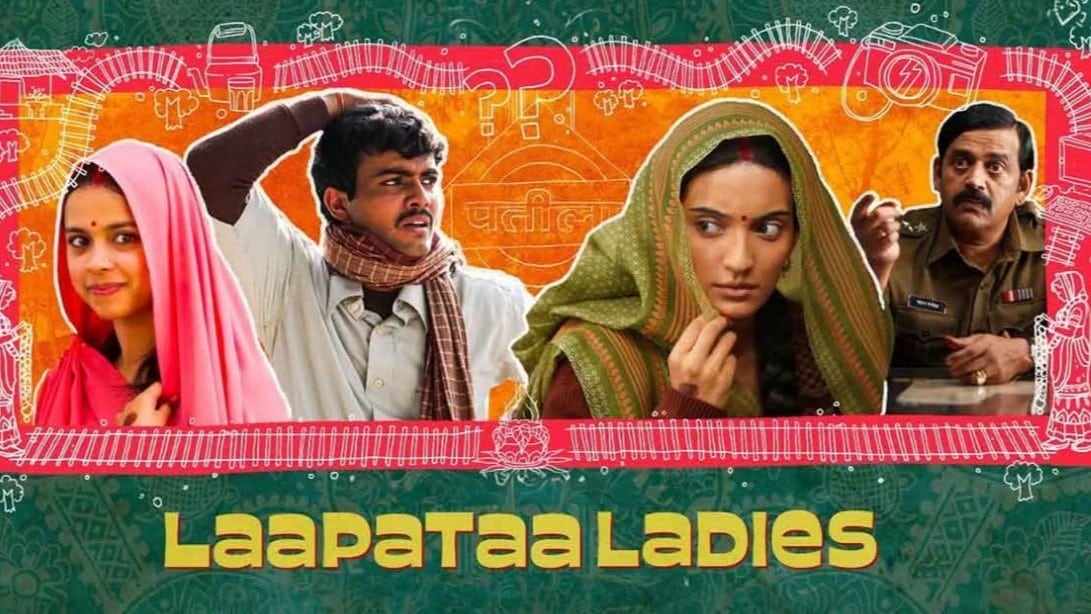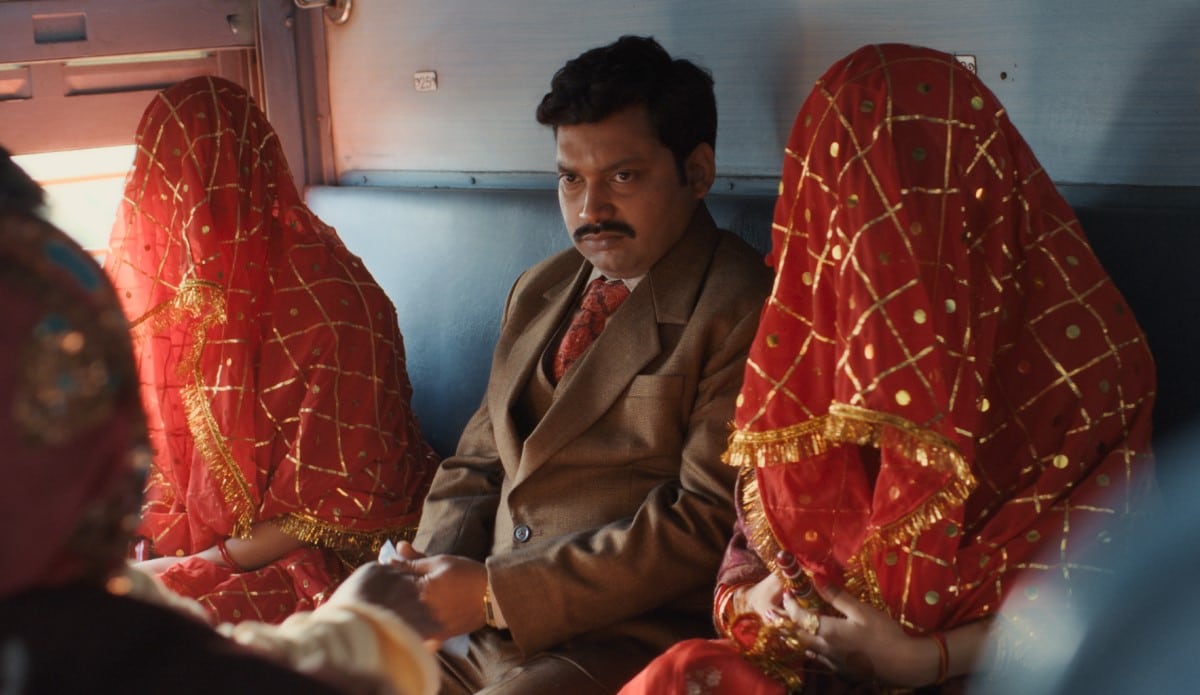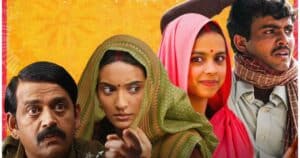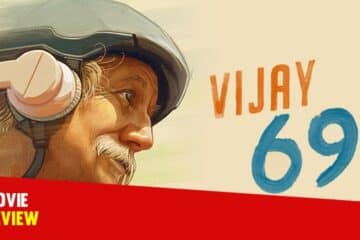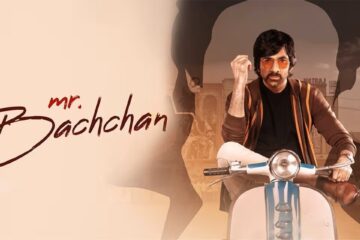Laapataa Ladies: Movie Review
Laapataa Ladies is a delightful and engaging cinematic experience that blends humor, societal commentary, and the quest for identity in a rural Indian setting. Directed by Kiran Rao, this film explores the theme of missing women in an unconventional yet entertaining way, focusing on the dynamics of love, marriage, and the complications that arise from rigid gender norms. The film stands out for its refreshing approach, sharp writing, and ensemble cast, making it a must-watch in today’s age of progressive Indian cinema.
Plot Summary
The story of Laapataa Ladies revolves around two newly-wedded brides who go missing on a train journey in rural India. The missing brides, Phool (Nitanshi Goel) and Rani (Pratibha Ranta), set off a frantic search, not only by their families but also by the entire village, leading to chaotic and hilarious outcomes.
The film starts with the introduction of Phool and Rani, both of whom are products of arranged marriages in a conservative setup. Phool is a young bride, excited and full of dreams about her new life, while Rani is a bit more reserved, grappling with her new role as a wife. During a train journey, they both mysteriously disappear, leaving their families in a frenzy.
What follows is a journey of discovery, both for the brides and for the society that is forced to confront its own biases and prejudices. The film cleverly addresses the issue of female autonomy, freedom, and the pressure of fulfilling societal expectations. As the search for Phool and Rani intensifies, the film throws light on the differences between how men and women are treated, especially in rural India, where traditional customs often overshadow individuality and personal choices.
Themes
1. Gender and Identity: One of the central themes of Laapataa Ladies is gender and identity. The film questions the societal roles imposed on women in patriarchal setups. Through Phool and Rani, the film paints a picture of how rural women often lose their identities in the shadow of their husbands and families. The film’s title, Laapataa Ladies (Missing Women), metaphorically represents the disappearance of female identity in marriages, where women are often reduced to the role of a wife, daughter-in-law, and mother, rather than individuals with dreams and desires.
As the story unfolds, we see both Phool and Rani rediscovering themselves in ways that surprise their families and challenge the societal norms that have long dictated their lives.
2. Satire on Patriarchy: Kiran Rao’s direction infuses Laapataa Ladies with sharp wit and satire, particularly targeting the deeply ingrained patriarchy that governs much of rural India. The missing brides become a vehicle to showcase the absurdity of how society treats women. The film presents the overreaction of the village to the disappearance of the brides in a humorous light but with an underlying critique of how much value is placed on a woman’s “purity” and marital status.
The husbands, portrayed with a comical blend of insecurity and confusion, serve as a reflection of how men, too, are trapped in the constructs of patriarchy, albeit in different ways. The film makes a point about the unrealistic expectations placed on both genders, but especially women, in such setups.
3. The Search for Freedom: At its core, Laapataa Ladies is a story about women searching for their freedom — not just from their marriages but also from the limitations imposed on them by society. The missing brides find themselves in a world that, for the first time, offers them the opportunity to make choices for themselves. It’s a subtle commentary on the lack of autonomy that women experience in traditional societies, where even basic decisions are often made for them by their male counterparts.
As Phool and Rani navigate their way through the chaos, they begin to experience a newfound sense of freedom and individuality. Their journey symbolizes the larger quest for liberation that many women face in a country where cultural traditions often clash with personal ambitions.
Character Performances
The performances in Laapataa Ladies are nothing short of spectacular. The film features an ensemble cast that brings a variety of emotions and quirks to life on screen.
Nitanshi Goel as Phool is brilliant, capturing the innocence and excitement of a young bride while also portraying her transformation as she begins to question her role in her marriage. Goel brings depth to her character, making Phool a relatable figure for many women who have struggled with their identities in the face of societal expectations.
Pratibha Ranta as Rani delivers a nuanced performance, portraying a woman caught between duty and desire. Rani’s journey is more internal than Phool’s, and Ranta excels in showing the emotional complexity of a woman who feels torn between the life she is expected to live and the life she wants.
The supporting cast, including the two husbands and the comical villagers, provides excellent comic relief while also contributing to the overall theme of the film. The chemistry between the ensemble cast members is palpable, adding to the film’s charm.
Direction and Cinematography
Kiran Rao, known for her previous work on Dhobi Ghat and her unique cinematic vision, brings her signature style to Laapataa Ladies. Rao’s direction is crisp, focusing on the minutiae of rural life, which adds authenticity to the film’s setting. Her attention to detail is evident in every frame, whether it’s the way the women are dressed or the dusty streets of the village.
The cinematography by Tushar Kanti Ray is another standout aspect of the film. The rural landscapes are captured beautifully, offering a contrast to the emotional turbulence of the characters. The use of natural light and color enhances the earthy tones of the village, making it feel like a character in itself.
Humor and Satire
One of the film’s strongest elements is its humor. Despite tackling serious themes like patriarchy and gender roles, Laapataa Ladies maintains a lighthearted tone throughout. The dialogues are witty, and the situations the characters find themselves in are often laugh-out-loud funny. However, the humor never undermines the film’s message. Instead, it serves as a tool to make the audience more receptive to the deeper social commentary.
Rao’s use of satire is also noteworthy. The film pokes fun at the absurdity of societal norms in a way that is both entertaining and thought-provoking. Whether it’s the overblown reaction of the village to the missing brides or the cluelessness of the husbands, the satire is sharp and effective in making its point.
Music and Soundtrack
The film’s music, composed by Amit Trivedi, complements the narrative perfectly. The soundtrack is a mix of folk tunes and contemporary sounds, reflecting the rural setting while also giving the film a modern edge. The songs are placed strategically within the film, enhancing key emotional moments without overpowering the narrative.
The background score, too, is subtle yet impactful. It elevates the tension during the search for the missing brides while adding to the overall whimsical tone of the film.
A Social Commentary Disguised as Comedy
While Laapataa Ladies is undoubtedly a comedy, it’s also a sharp social commentary on the state of women in rural India. The film doesn’t shy away from addressing uncomfortable truths about gender inequality, the lack of female agency, and the pressure to conform to traditional roles.
At the same time, the film also critiques the way men are raised to view themselves as the “heads” of their families. The husbands in the film, while comical, are also products of a system that has taught them to value their authority over understanding their partners as individuals.
What makes Laapataa Ladies so effective as a social commentary is that it doesn’t preach or moralize. Instead, it uses humor and satire to make its point, allowing the audience to reflect on the issues presented without feeling overwhelmed by them.
Why You Should Watch Laapataa Ladies
Laapataa Ladies is a breath of fresh air in the landscape of Indian cinema. It’s a film that manages to entertain while also offering a meaningful commentary on gender roles, identity, and freedom. The performances are stellar, the direction is sharp, and the humor is infectious.
If you’re a fan of films that make you think while also making you laugh, Laapataa Ladies is the perfect choice. It’s a film that stays with you long after the credits roll, not because of any grandiose drama but because of its honest portrayal of the everyday struggles of women in rural India.
The film is a reminder that the battle for gender equality is far from over, but it also offers hope that change is possible — one step, one laugh, and one story at a time.
Conclusion
In conclusion, Laapataa Ladies is a film that deserves all the accolades it receives. Kiran Rao has crafted a movie that is not only entertaining but also thought-provoking, addressing important social issues in a way that feels fresh and engaging. With its strong performances, clever writing, and a perfect blend of humor and heart, Laapataa Ladies is a must-watch for anyone who enjoys cinema that challenges the status quo while also providing a thoroughly enjoyable experience.
FAQs
2. Who are the main characters in Laapataa Ladies and what are their roles?
The main characters are:
- Phool, played by Nitanshi Goel, a young bride who is excited about her new life but later starts questioning her role.
- Rani, portrayed by Pratibha Ranta, a more reserved bride who struggles with the expectations placed on her. The film also features their husbands and the villagers, who add to the humor and social commentary.
3. What themes does Laapataa Ladies explore?
The film explores several themes, including:
- Gender and identity: Examining how traditional roles impact women’s sense of self.
- Satire on patriarchy: Critiquing the societal norms and expectations imposed on women.
- Search for freedom: Highlighting the quest for personal autonomy and freedom from societal constraints.
4. How does Kiran Rao’s direction contribute to the film?
Kiran Rao’s direction is noted for its sharp wit and satire, effectively blending humor with social commentary. Her attention to detail and authentic portrayal of rural life enhance the film’s impact, making it both entertaining and thought-provoking.
5. What can viewers expect from the film’s humor and soundtrack?
Viewers can expect a blend of clever humor and satire that addresses serious issues in a light-hearted manner. The soundtrack, composed by Amit Trivedi, features a mix of folk and contemporary music that complements the film’s setting and emotional tone.

